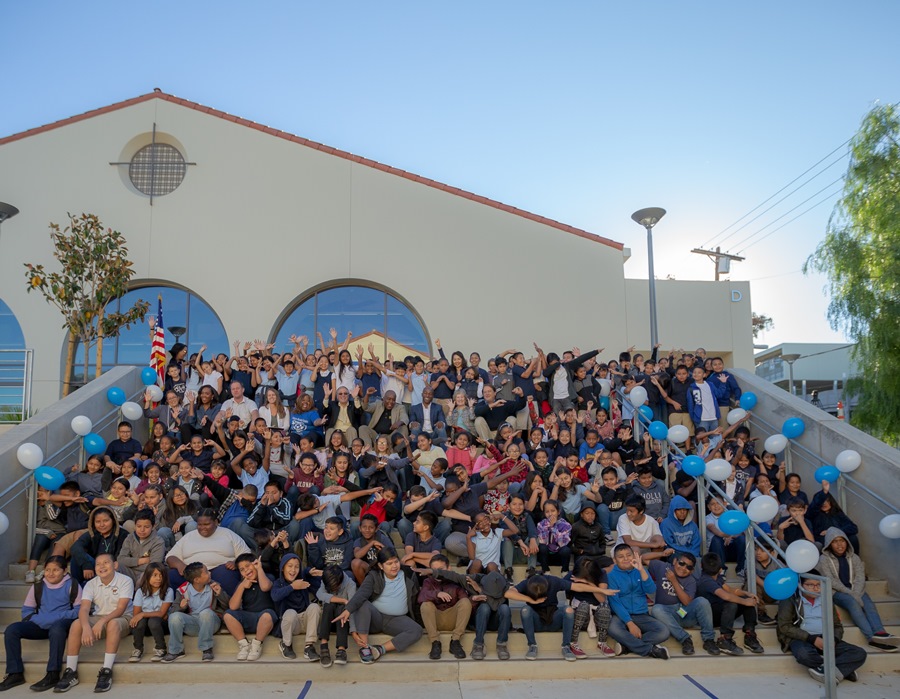By Brian Beary
In a state where the overall population has continued to steadily rise, school attendance has dropped ever so slightly over the past five years. The US Census estimates that California’s population last year was 39,557,045, up from just over 37 million in 2010. And yet according to the California Department of Education the number of students enrolled around the state in K-12 schools went from 6,226,737 to 6,186,278 in the past four years. If California has nearly two million more people, why are there over 40,000 fewer children attending public schools?
In order to better understand how our education system is changing right before our eyes, it might be helpful to look at what has been happening in the Pasadena Unified School District. As reported by the Pasadena Independent, the district population has decreased by nearly 2,100 students since the 2012-2013 academic year, forcing the closure of schools across the community. What has happened there is in many ways a snapshot of the rest of the state. So what are some of the more significant causes of a shrinking public education system? Here are a few of the most notable contributing factors.
Housing Costs
Even as the state legislature attempts to cap rising rents in response to Governor Newsom’s proposal for a rent ceiling, costs are continuing to increase. The most visible outcome is the overcrowding of apartments and homes. It is not uncommon to find three generations under the same roof, or two families sharing living quarters, or five roommates dividing up a two bedroom apartment. In addition, the reverse diaspora of families leave town to less expensive communities of the Inland Empire, Lancaster/Palmdale and even cities in nearby states like Nevada, Texas and Arizona. When housing costs surpass 50% of incomes, people are forced to search for reasonable alternatives.
Housing Composition/Construction
While there have been thousands of housing units built in Pasadena in the last 20 years, the majority have targeted the “luxury” end of the spectrum. Certainly this predilection by home builders to concentrate on the upper 25% of the population to inhabit their developments has contributed to higher housing costs. This process has skewed the inventory available towards either young, single buyers or aging couples who want to downsize. Members of both groups seemingly have the financial resources available to cover ballooning costs. With enormous new buildings going up around town at a rapid clip, very few, if any, are designed for families as would-be occupants are hard pressed to find three and four bedroom units. Most commonly constructed are studios, 1’s and 2’s, or “junior 1 bedroom,” a new euphemism for glorified studios. Even with the city’s Inclusionary Zoning Ordinance, the number of affordable units built in that time is minuscule compared to the need.
Competition by Charters, Private Schools, Home Schooling, etc.
According to conservative estimates, over 40% of school-age children who live within the boundaries of the Pasadena Unified School District do not attend PUSD schools. At a recent meeting of the PUSD it was reported that there are over 50 independent schools in the Pasadena area with a total student population of just over 10,000 students. There are few cities in the entire country that have a similarly disproportionate amount of students attending private, charter, parochial, home, etc. schools. While private schools are not a new phenomenon in the area, the surge in charters and home-schooling is more recent and an outgrowth of overall societal dissatisfaction with public education and parallels national trends. Alternative schooling possibilities have left PUSD with fewer students and with little choice; school closures unfortunately seem to be the only viable option as enrollment continues to decline.
Lower Birth Rates
Common throughout the industrialized world, people are choosing to have fewer children, so this is not a surprise. What it equates to, however, is a considerably smaller pool of students. Records from the Pasadena Public Health Department indicate that in Pasadena in 2007 there were 2,221 births to residents of Pasadena, or a 69.7 per 1,000 rate. By 2018 that number had fallen dramatically to 1,652 births to Pasadena residents, or a 52.5 per 1,000 rate. Even the national birth rate has not decreased as drastically as Pasadena. For many reasons, including fewer people of child-bearing years in the community, the birth rate in Pasadena will likely continue to drop.
Historical Racism
As with many cities, Pasadena has not been immune to racist practices. For decades, real estate agents and loan officers participated in redlining, keeping many residents sequestered to certain neighborhoods within the city, doing their part to keep it segregated. With the likes of Gamble, Wrigley, and Huntington, early Pasadenans were among some of the wealthiest in the nation and didn’t want their children to share classrooms with the caretakers’ kids, so they built their own schools and even constructed one specifically for Latinos (the Chihuahuita School in East Pasadena). This type of segregationist attitude ended up in the first desegregation mandate west of the Mississippi in 1970. Forced busing and integrated schools were viewed with mixed responses then and those sentiments prevail today. Whatever the reasons, high attendance in private schools suggests that many affluent families in the area can afford the average tuition, anywhere from $13,000 to $24,000 a year, leaving public schools with a monochromatic student body from both social and economic vantage points.
So where does this leave the community and what is the future of public education in the Pasadena area? First of all, there will be more competition. It has already started with charter schools advertising for their services to public school parents. This is only the tip of the iceberg further eroding usage of public schools. With declining student populations to choose from, all schools will use whatever means possible to attract students so that they don’t have to close their doors. Social media, direct advertising, tabling at events, ads in all forms of media, open houses will be utilized to make the case for each school as they try to out-do the others. Where once public schools assumed that they would get their fair of students they will have to enter this competitive landscape in order to survive. Unfortunately, this could mean that schools within districts will potentially compete against one another in order to stay open.
With low birth rates sure to continue negatively impacting Pasadena, eventually even some private schools that recruit from neighboring districts won’t be able to stave off imminent closure without creative planning. Charters may have to rethink their structure and consider a more formal relationship with the PUSD while the district will continue to shutter its public schools. How will we adapt as a society so that we can maintain a public education system that cares for every student, not just those with money or prestige? The challenge for this community is how to maintain high educational quality in the face of constricting budgets and how to use empty campuses in productive ways, ensuring that full ones thrive. With growing nationwide trends, Pasadena won’t be the last community to face school closures. The challenges are real and the discussion must begin.







